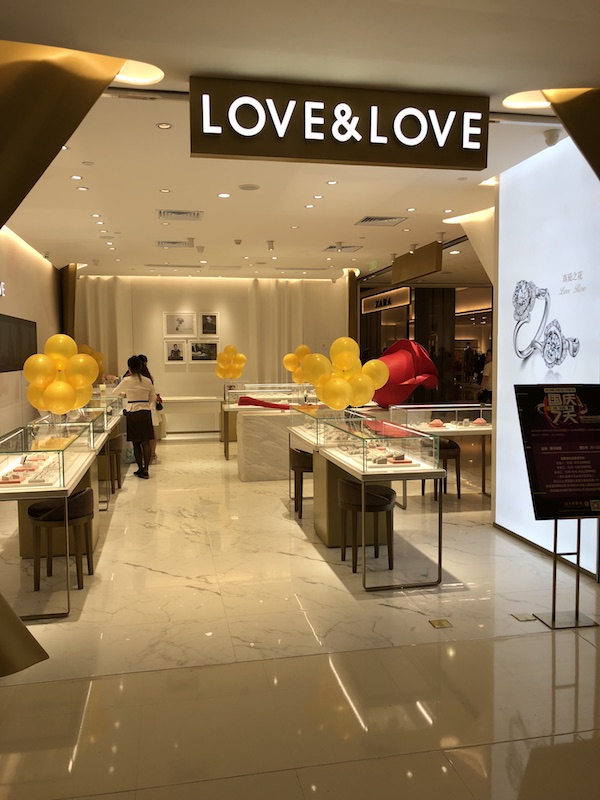X & X
« previous post | next post »
Perhaps modeled on the rise of big brands like Abercrombie & Fitch, Crate & Barrel, etc. (though in our own history going back much further), but a bit different, in Asia, we have Nail & Nail, Lock & Lock, Bagel & Bagel, and so forth. Below are photographs of two shops in Asia with "X & X" names.
I should mention that the Chinese name of the first one is "rèlà shēnghuó 热辣生活" ("hot and spicy life").
There may be some particular reason for the proliferation of "X & X"-type names in Asia, but I don't know what it is.


Laura Morland said,
October 8, 2018 @ 12:32 am
Strange that they didn't "get" that the English-language formula is never X&X but always X&Y.
By the way, I read an article in the Times that instantly made me think of you… and then saw that you were quoted in the next paragraph! I was thinking you might comment on it here. (Or have you, and I've missed it?)
https://www.nytimes.com/2018/10/04/world/asia/taiwan-food-q-texture.html
Ran Ari-Gur said,
October 8, 2018 @ 12:49 am
@Laura Morland: Does Johnson & Johnson count?
Laura Morland said,
October 8, 2018 @ 1:05 am
@Ran Ari-Gur — oh, right!
Well, Johnson & Johnson may be the exception. Of course, there are also a number of law firms with names like X&X, but I was thinking about commercial companies.
Upon reflection, I will test the young adults in my household, but I don't think people these days are truly aware of Johnson & Johnson as a company — only the products they make. In fact, I just checked their website, and their popular products are called "Johnson's X" (if they use the name Johnson at all):
https://www.jnj.com/healthcare-products/consumer
HSIAO-FENG CHENG said,
October 8, 2018 @ 5:27 am
In her article of NYTimes (04 Oct 2018) Ms Qin said: The origins of the term Q are unclear. Some say it comes from the Taiwanese Hokkien word k’iu.
The origin of the Taiwan Mandarin term Q [kiu1 in pinyin but the rime is pronunced like you in English] is, contrary to her words, very clear from any Taiwanese (aka Taiwanese Hokkien in her article)-speaking person: the origin is khiū (in POJ/Tailo). Taiwan Mandarin borrowed the word, changed its tone to Tone 1 (high level).
Victor Mair said,
October 8, 2018 @ 10:58 am
This one from Sapporo, Japan…
BZ said,
October 8, 2018 @ 11:28 am
I can almost replace the first one if they mean to highlight two meanings of hot (popular and spicy, say). I can't think of any examples like that from US brands, but it sounds ok.
Charles in Toronto said,
October 8, 2018 @ 11:37 am
Some Chinese-Canadian friends have told me that businesses are often given English names that the owners think look/sound nice rather than going for a translation of the Chinese name. I could imagine that a "X&X" name would have a pleasing symmetry by those standards.
Michael Watts said,
October 8, 2018 @ 2:28 pm
Hot & Hot seems like a triumph of translation to me. It's a punchy name in English and accurately reflects the Chinese — 热 (hot, like a fire) 辣 (hot, like a chili pepper).
Ben Zimmer said,
October 8, 2018 @ 4:30 pm
@Laura: ICYMI, see Victor's post "Q-TAXI" for more on the Taiwanese "Q" trend.
Narmitaj said,
October 8, 2018 @ 5:50 pm
Publisher Faber & Faber springs to mind as an X&X, but again like the Johnsons (and law firms) that's only a pair of surnames rather than nouns/ adjectives (and their website deploys a solofaber: https://www.faber.co.uk/ ). Saatchi & Saatchi are also just names (solosaatchi in the url: saatchi.co.uk/en-gb/ ).
There was M&M Ltd, but that's a contraction of Mars & Murrie, and again surnames.
Fyi "The XX" sans & is a UK indie band, btw.
monscampus said,
October 8, 2018 @ 7:36 pm
To me x+x looks just like an illustration of the Chinese saying (I heard about) "Good Things Come in Pairs". It must look doubly attractive to potential buyers. As in other cultures three is the preferred lucky number, saying it twice sounds just a tad boring. In comes the hendiadys, much more delightful in my book. Alas, the x & more (as in miles and more) seems to be unstoppable (if unoriginal and vague).
Jenny Chu said,
October 8, 2018 @ 7:42 pm
In Vietnam in the mid-1990s, Sprite launched an advertising campaign based on its "Lymon" ("Limon"?) flavor, i.e. lemon + lime. In Vietnam, the common sour citrus fruit is the "chanh", green on the outside and yellow on the inside.
The resulting TV commercial: "CHANH! … và … CHANH!"
(và = and)
Jenny Chu said,
October 8, 2018 @ 7:44 pm
You can find a photo of a chanh here:
http://tintucsuckhoe.net/thuoc-dong-y/cach-cham-soc-va-phuc-hoi-toc-tu-qua-chanh-a76
Chas Belov said,
October 9, 2018 @ 2:57 am
There are of course the candy M&Ms.
Coby Lubliner said,
October 9, 2018 @ 10:51 am
For some reason architecture firms prefer + to &, though I don't know whether it's meant to be read as "plus" (as would be normal in English) or "and".
Rebecca Root said,
October 9, 2018 @ 3:55 pm
Not exactly relevant, but it did bring up a fond memory of "Hines, Hines and Dad", eschewing the usual formula of "Hines and Sons"
Paul said,
October 10, 2018 @ 11:16 am
https://en.m.wikipedia.org/wiki/Lock_%26_Lock
Lock & Lock our of Korea is a huge company. They changed their name to L&L about 15 years ago. It’s not the X&X formula that is of note. It’s the fact that they use an on-the-nose descriptor. You sell chairs and can’t think of a better name? Chair & Chair!